Further Reading & Assistance
There is a vast amount of published work available on metal detecting, and all its associated interests and specialised subjects. Some of these can be very reasonably priced, while more specialised work can often be quite expensive. To pay over £100 is not unusual for some reference works on Roman coins, for example.
The development of your attitude towards metal detecting, and the areas of interest you adopt, will largely influence what reading sources you choose. However, finding an unusual button or 17th century trade token, may see you searching out and buying works on subjects that a few days ago you would never have considered.
That is one of the great things about metal detecting….you don’t have a clue what your next find will be or what information you will next be researching as a result of that find. Because of this natural and individual variation, it is impossible to cover all helpful publications.
Recently, another piece of assistance to the beginner detectorist has arrived and this is the video CD and DVD. Several are available; however, the one that springs to mind is Mike Pegg’s production called “Metal Detecting Down to Earth”. Mike’s enthusiasm is difficult to beat and emanates strongly from his films.
With regards to television there are several programs that are extremely interesting, as they show the superb results of responsible detecting coupled with research. These include “Hidden Treasures” and “Two Men in a Trench”. For those interested in the past time of Thames foreshore “mudlarking” then there is no finer programme than “Mud Men”. For the aviation archaeologist I would recommend the series called “Dig 1940”. Here you can see tangible evidence of just how important metal detecting is for discovering and conserving our heritage.
The Internet is now widely available and there are thousands of detecting-based websites and forums worldwide. The forums welcome new members and are often affiliated to clubs. Many of these forums offer a superb service regarding artefact identification and advice.
The following, however, are the literary publications we consider to be among the core requirements for a general overview of finds made in the UK and essential to the detectorist’s library. In addition to our recommendations, though, please remember there are numerous other published works that are also excellent.
Dealers Lists/Pamphlets
Many dealers produce lists, catalogues etc either in hard copy or available on mailing lists via the Internet. Collecting and indexing these will undoubtedly assist in coin and artefact identification.
Auction House Catalogues
Some of these are lavish publications in their own right, packed with colour photographs on glossy paper. They can be rather expensive to subscribe to, but are worth acquiring. They provide yet another very useful reference source.
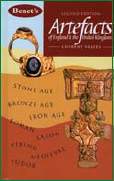
Benet’s Artefacts of England & The United Kingdom compiled by Paul Murawski and now in its second edition, is one of the most luxurious of metal detecting orientated publications. It covers finds from the Stone Age to the medieval period. Issued in hardback, the quality of the illustrations is superb. This publication will never be found far away from any serious detectorist. One or two of the illustrations are actual Pastfinder discoveries, and we are delighted that they have been included. ISBN 0 953617 211
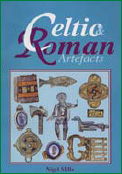
ISBN 978 1 897738 375
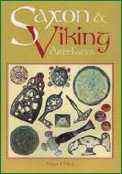
ISBN 978 1 897738 054
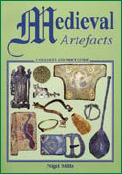
ISBN 978 1 897738 276
Celtic & Roman Artefacts, Saxon & Viking Artefacts and Medieval Artefacts by Nigel Mills. This author and antiquity expert has produced three very valuable aids to artefact/antiquity identification, resulting from his unparalleled experience of detector finds. As in so many hobby-associated publications, it is not just detectorists who are using these books as identification aids.
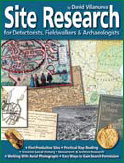
Site Research by David Villanueva. Why should one field be productive of finds year after year and yet the next field be totally barren? The answer is past human activity, and this book shows through map and document research, how to locate such activity. ISBN 1 897738 285
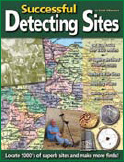
Successful Detecting Sites Using rare 18th & 19th century sources, David Villanueva has drawn on over 30 years experience in metal detecting and historical research to compile this exciting guide to thousands of potentially successful detecting sites throughout the United Kingdom, with histories stretching back hundreds or even thousands of years.
ISBN 978 1 897738 306
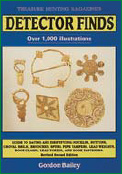
ISBN 978 1 897738 023
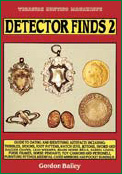
ISBN 978 1 897738 016
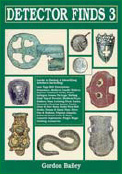
ISBN 978 1 897738 221
Gordon Bailey’s Detector Finds Series At present there are seven individual volumes in print, with hopefully more to follow. This series is really the backbone as regards identifying some of the more common and rarer finds that you may encounter. Have you found a strange fragment of something, or an unusual small artefact? The chances are that you will find it illustrated in these volumes. As is often the case in hobby literature, these books have been written by a detectorist for detectorists.
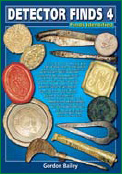
ISBN 978 1 897738 320
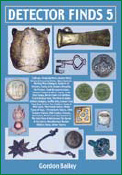
ISBN 978 1 897738 108
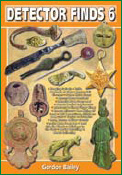
ISBN 978 1 897738 313
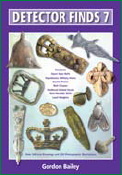
ISBN 978 1 897738 399
Spinks Coins Of England & The United Kingdom
An unbeatable book for all those who admire, find and collect coins. Beginning with a detailed section on Celtic coins, it ranges right up until the latest issues of Queen Elizabeth II. It is the most comprehensive overall single volume available on UK coinage, and is considered to be a “must” by most detectorists.
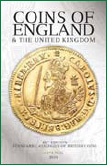
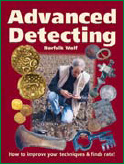
Advanced Detecting by John Lynn, also known as the “Norfolk Wolf”, is a must when you move on from the “beginner” stage. It will help you improve your skills, and explains how to overcome most detecting problems and situations. ISBN 978 1 897738 252
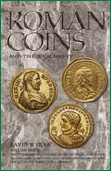
Roman Coins and Their Values Vol.4 by David R. Sear. This beautiful hardback book contains 552 pages and is amply illustrated throughout. It contains a comprehensive listing of the Roman coinage of the period AD 284-337 together with background information on the history of each reign. In addition to detailed descriptions of over 4400 coins this fourth volume contains a wealth of biographical and detailed numismatic information. ISBN 978 1 907427 07 7
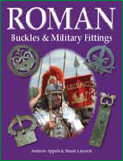
Roman Buckles & Military Fittings Over the centuries that the Roman army occupied Britain, its’ soldiers used a bewildering variety of fittings. In this book, Laycock and Appels set out to document and identify many of the items of Roman military kit encountered today by detectorists and archaeologists and set them in their historical and military context. The text is lavishly illustrated with over 900 full colour photographs of surviving Roman military kit, most of them never before published. ISBN 978 1 897738 290
Edward Fletcher’s Tokens & Tallies Series
The numerous uses to which these enigmatic artefacts were put over the centuries are examined in these books, supported by historical and archaeological research. The tokens, with their great variety of fascinating designs, are illustrated throughout, which will also help with identification.
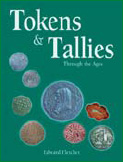
Tokens & Tallies through the ages – over 400 token illustrations from ancient to early 20th century. ISBN 978 1 897738 160
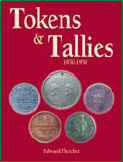
Tokens & Tallies 1850-1950 looks in more detail at this period, with over 600 illustrations. ISBN 978 1 897738 196
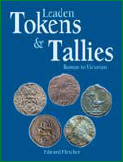
Leaden Tokens & Tallies – Roman to Victorian. Over 780 illustrations of lead tokens. ISBN 978 1 897738 269
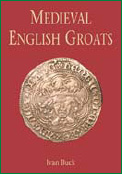
Medieval English Groats. This is the definitive reference work on English Groats. Written by Ivan Buck, it covers the groat from its introduction in the reign of Edward I (1272-1307) right up to the end of the Tudors in the early 17th century. Essential reading – this work helps to identify the various types of groat and the major varieties.There are over 400 colour illustrations in the text and a number of scarce and rare coins are illustrated for the first time. ISBN 978 1 8977 38 420
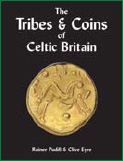
The Tribes & Coins of Celtic Britain The Celts left no written records and the only historical accounts we have of them derive mainly from Roman writers. As little as 30 years ago many mysteries – and misconceptions – still existed as to the Celtic tribes of Britain and their kings. But thanks to metal detecting finds and the Celtic Coin Index, far more is now known. In this book Rainer Pudill draws on his experience as a collector – and this new knowledge – to present the latest thinking and facts on the Celts and their coins. ISBN 978 1 897738 242
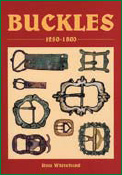
Buckles 1250-1800, written by Ross Whitehead, contains over 800 illustrated buckles (mostly in colour) with full descriptions and background text. A unique classification format using shape rather than type or period, aids identification. Contents include: buckle manufacture; single looped buckles; buckles with integral plates; clasp fasteners; annular buckles; rectangular and trap ezoidal buckles; asymmetrical buckles; two piece buckles and finally buckles as jewellery.
ISBN 978 1 897738 177
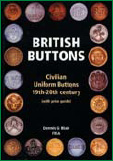
British Buttons by Dennis Blair An authoritative book for collectors and those interested in the design of buttons. An ideal reference work for identification of button finds. It contains 375 button examples reproduced in colour, including Livery and Royal Court buttons as well as General issues. There is also a chapter on button making. ISBN 978 1 897738 047
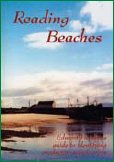
Reading Beaches Ted Fletcher tells you how to be in the right place, at the right time, and with the right detector and shows you how to identify the most productive search spots. This A5 title runs to 88 colour pages and contains over 50 illustrations.
ISBN 978 1 897738 153
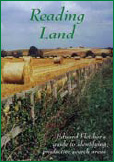
Reading Land This title draws the reader’s attention to sites where people have congregated over the years, and where, naturally, losses of coins, jewellery etc have increased dramatically.
ISBN 978 1 897738 115
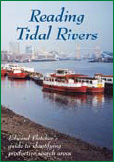
Reading Tidal Rivers This title shows you where to look on British & European tidal rivers for those elusive metalic artefacts that have been lost over the years.
ISBN 978 1 897738 085
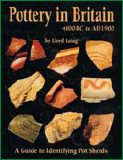
Pottery in Britain by Lloyd Laing. This book aims to provide an introductory guide to identifying some of the basic types of pottery that may be found, and contains 178 illustrations, mainly in colour. It covers a vast spectrum of pottery from the prehistoric Neolithic period right through to the 19th century. It also has sections on the potter’s craft, the study of pottery and a glossary of terminology. ISBN 978 1 897738 146
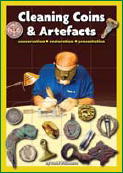
Cleaning Coins & Artefacts by David Villanueva, shows you what you can safely do to clean & preserve metal detector finds. Included are sections on: safe storage; identification and assessment; cleaning finds; mechanical cleaning; electrolysis; chemical cleaning and conservation; repair, restoration and replication; photographing your finds; storage and display; bibliography and suppliers. ISBN 978 1 897738 337
British Artefacts
by Brett Hammond
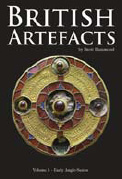
Volume 1 – Early Anglo-Saxon
ISBN 978 1 897738 351
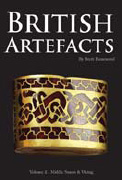
Volume 2 – Middle Saxon & Viking ISBN 978 1 897738 382
These are ideal reference works for detectorists, archaeologists, museum staff, collectors and anyone with a serious interest in the Saxon and Viking years. The books are illustrated with hundreds of beautiful colour photographs of the many classes of artefacts covered. Also each volume contains maps, diagrams, tables, a bibliography and a glossary.
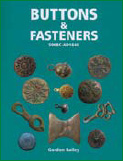
Buttons & Fasteners 500 BC-AD 1840 by Gordon Bailey. With over 1,000 high quality colour photographs, this book allows the identification and dating of metal buttons from the Iron-age to the early 19th century. It also covers Iron Age toggles, Saxon-Tudor hook fasteners, and ring brooches.
ISBN 978 1 897738 218
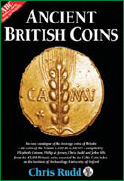
Ancient British Coins Chris Rudd. An indispensible aid for anyone wanting to identify Iron Age coins. This comprehennsive book describes and dates the coins, estimates their rarity and shows them at twice actual size to illustrate their distinctive differences. ISBN 978-0-9566889-0-3
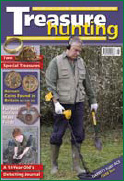
Treasure Hunting is Britain’s best selling metal detecting magazine. It is packed full of interesting articles and regular features about metal detecting. Published monthly, it is available at all good newsagents.